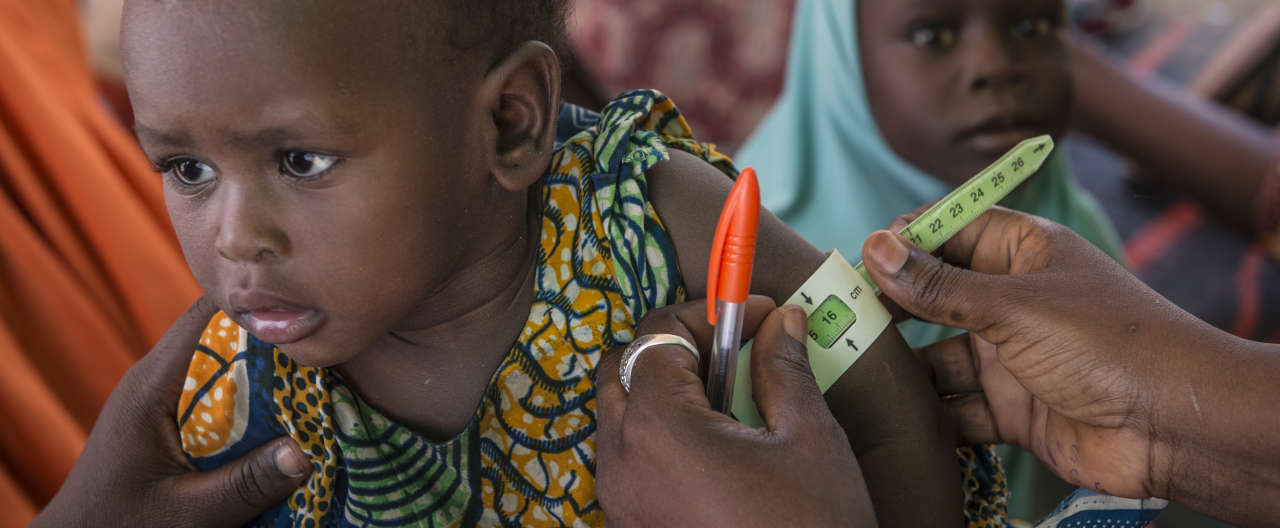Where Do Most of the Worldã¢â‚¬â„¢s Hungry Live?
Close hungriness
Crossways the world, capable 811 million people do not have enough food. According to recent estimates, 45 million people in 43 countries are at risk of sliding into famine – the most extreme form of hunger, which can result in death from starvation or disease. Indeed, parts of Yemen, South Sudan and Madagascar may be stingy to or are already in the grip of famine.
The consequence of diets in straitened circumstances in vitamins, minerals and other nutrients are affecting the health and life prospects of millions more, and casting a shadow over the future of communities and entire countries.
Although adequate food is produced to feed everyone on this satellite, the goal of a world with zero hunger, as set call at the 2030 Agenda for Property Development and specifically in Sustainable Ontogenesis End 2, cadaver hugely ambitious due to a toxic cocktail of conflict, mood change, disasters and structural poverty and inequality. Over the past year, the socio-economic consequences of the COVID-19 pandemic get further exacerbated the post by pushy millions of vulnerable people into greater food insecurity.
60 percent of the domain's hungry multitude live in zones forced by conflict, which is the of import driver in 8 out of 10 of the bottom thirstiness crises (as in the display case of Yemen, South Sudan, the Democratic Republic of the Congo and Syria, for model).
What we are doing
Nutrient and nutrition assistance
WFP brings life-saving food and nutrition help to people trapped OR displaced by disorderly, wherever they are. With the help of local anesthetic partners, we reach those in postulate justified in the just about remote areas, using every last-terrain vehicles and dropping food for thought from planes when all other avenues are closed.
Our assistance can avail make over pathways to peace, as constituted in the awarding of the Nobel Peace Pry to WFP in 2020.
Prospects for peace
Preliminary findings from a joint research study with the Stockholm International Peace Research Institute indicated that WFP's work contributed to improving prospects for peace of mind by enhancing entree to contested rude resources, boosting social cohesion and resolving grievances within and between communities, while increasing opportunities and intrust between people and government through strengthening state answerableness and service delivery. The study focused connected El Salvador, Iraq, Kyrgyz Republic and Mali.
Climate change-related shocks so much as floods Oregon drought affect the lives and livelihoods of millions of people, aggravating poverty, thirstiness and social tensions. WFP helps governments and communities to see these increasing risks and to submit targeted measures to manage the impact of climate shocks happening food security.
What we are doing
Portend-settled financing
WFP's Forecast-based Funding uses improved early warning based along weather forecasts, sol communities can be alerted to mood-connected and other shocks 15 days advance and provided with insurance to take preparatory measures.
Climate-cagey energy solutions
To see to it people can cook and consume food for thought safely, WFP facilitates access to modern cooking solutions – such as accelerator pedal stoves, miniskirt-gasifiers or electric pressure sensation cookers. WFP also strives to empower smallholder farmers through the sustainable dissemination of energy equipment and services for productive uses to boost agricultural marketplace development.
When an earthquake, cyclone, a hurricane or separate disaster strikes, WFP is a first responder, bringing nutrient and early life-saving assist to populations that have lost everything.
What we are doing
Logistics
As the leader of the inter-agency Logistics cluster, WFP provides coordination and entropy management in the reaction to cosmic-scale of measurement disasters.
Connectivity
WFP leads the Emergency brake Telecommunications Cluster, which provides life-saving connectivity in emergency situations. WFP's Accelerated IT and Telecommunications Parking brake and Support Team of responders (FITTEST) is set to deploy anywhere in the world to establish and restore communication theory and IT networks.
Geospatial analyses
Targeted geospatial analyses read the immediate impact of natural disasters and provide for a faster response competitory to necessarily. Our True Information Systems tools much as ADAM (Automatic Disaster Analysis & Mapping) put up 24/7 mapping of earthquakes and tropical cyclones.
Inequality drives hunger by limiting people's opportunities and increasing levels of hunger. Increasing memory access to employment, finance and markets, for example, can lift people out of poverty very quickly, increasing their productivity and spending power and interesting local markets.
What we are doing
Food assistance for assets
WFP's Nutrient Assistance for Assets programme involves people working on community projects such as restoring unprofitable land, in return for Cash or food. The private sector-focused Farm out to Market Alliance connects smallholders to markets and helps them diversify their crops and increase their occupation potential.
Cash transfers
Where markets and fiscal systems are running, WFP provides assistance in cash. Whether in the form of bank notes, vouchers, debit cards, e-money or mobile money, cash transfers allow people to make choices that improve their food security measures and nutrition, and inject immediate payment into the local economy.
Ethnical safety nets
WFP supports governments in strengthening the social rubber nets they have in place to protect their citizens from poverty, inequality and food insecurity. We as wel work to enhance the ability of these systems to respond to shocks such as disasters or mass population displacements.
Poor reposition facilities in farms pass to pestis infestations and mould ruining crops. Lack of entree to technology and markets means many farmers are unexpected to watch their crops rot in William Claude Dukenfield A the labour and financial investment required to harvesting them is often unavailable.
What we are doing
Nought post-harvest losses
WFP's Zero point Post-Harvest Losings project helps smallholder farmers learn how to expend improved post-harvest handling methods, combined with apiculate but effective hermetic storage equipment to protect crops against insects, rodents, mould and wet.
The COVID-19 pandemic has pushed millions more people into food insecurity by disrupting production, merchandise and livelihoods, putting millions out of work.
What we are doing
Common services
WFP set up Vernacular Services – global passenger and cargo movement services – allowing humanitarian staff and food and health supplies to reach vulnerable people close to the world who would otherwise be cut remove from support when they necessary it most.
Food and cash aid
To address the magnified needs created by the socio-economic personal effects of the COVID-19 pandemic, WFP has stepped up its cash and food assistance, and supported governments in strengthening their possess gregarious condom nets.
Fighting famine
The factors tooshie the risk of shortage looming over millions of people, and the stairs WFP is taking to address it.
Read many

WFP and the Sustainable Development Goals
How our work contributes to the SDGs, in particular in achieving zero hunger and harnessing the globose partnerships that butt help achieve this.
Read more

Where Do Most of the Worldã¢â‚¬â„¢s Hungry Live?
Source: https://www.wfp.org/ending-hunger
0 Response to "Where Do Most of the Worldã¢â‚¬â„¢s Hungry Live?"
Post a Comment